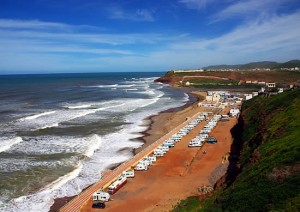Vacation in Sidi Ifni On the Shores of the Atlantic, Your Morocco Tour Guide
July 7th, 2014
Sidi Ifni is some two hour’s drive from Agadir and is unique because of its much admired Spanish Art Deco buildings built when it was a Spanish enclave from 1934-1969. A vacation in Morocco’s Sidi Ifni on the shores of the Atlantic of Agadir is a great way to pass…


